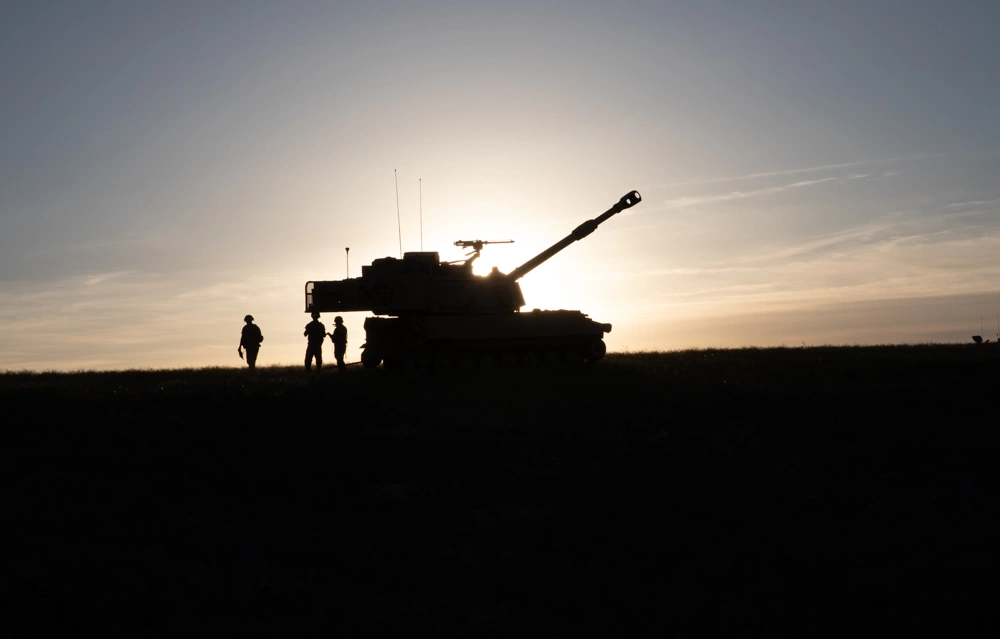Women in Special Forces resorted to buying their own armor, study finds
- By Military Times
Share This Article

This article by Hope Seck was originally published by Army Times.
Nearly half of the women in U.S. Army Special Operations Command have problems with the way their issued gear fits, and some resort to buying their own – or borrowing a spouse’s – to ensure they can operate in comfort and safety. That’s according to a wide-ranging internal study on barriers to service for women in special operations, obtained by Military Times through a public records request.
In the study, which included a survey of 5,000 USASOC members and small focus-group meetings with 198 women throughout the command, access to properly fitting gear, and even inexpensive devices allowing for urination in field environments, emerged as a major concern. Two years later, many of the recommended solutions remain works in progress as the Army completes wear experiments and fit tests. For some issues, though, officials say the solution comes down to better education and awareness about how to adjust gear or request needed items.
The 106-page study found that 44% – dealt with equipment fit problems that hindered their ability to perform their essential soldier skills, “consequently creating adverse effects on overall lethality and survivability.” These issues ranged from body armor designed for men that didn’t fit against a woman’s body, leaving coverage gaps; MOLLE packs that rubbed shorter women raw; helmets that couldn’t be adjusted over hair buns and left soldiers unable to see in front of them; and a lack of bladder relief systems that forced soldiers to hold their urine until they developed urinary tract infections or to resort to the dangerous practice of “tactical dehydration.”
Related: New Navy report reveals rare SEAL training attrition data
Having available gear that fits and meets the needs of female soldiers is more than a practical consideration, the study noted; it’s also about acknowledging women as full members of units and teams.
“Over the course of this study it became evident that gender bias is deeply embedded into staff processes and equipping, at all echelons, thus creating additional barriers. The majority of these biases are a result of preconceived beliefs that female service members should not receive gender-specific ‘accommodations,’” the study found. “A mentality change is necessary to modify the archaic attitude that supplying tools to female service members is an act of accommodation versus simply providing our warfighters with the right tools for the job.”
Across “all ranks and demographics,” the study found, women in USASOC are taking matters into their own hands to acquire body armor they can move safely in. That’s despite a U.S. Special Operations Command policy requiring SOF forces to wear only body armor that has been approved by the command. One senior enlisted woman said her husband gave her a set of body armor for their anniversary; an officer bought her own “because I need it to fit,” she said.
“In addition to mobility issues associated with poor fitting body armor, many women reported not being issued side plates due to lack of inventory and very limited availability of extra-small and small sizes,” the study reported.
When the results of the study were published at the end of 2021, the Army was in the process of fielding the Modular Scalable Vest, a lighter and more adjustable armored plate carrier that promised to address major fit complaints for women as well as shorter men. Fit tests with the MSV continue, and women in USASOC are set to get the vest at an undetermined date following fielding to the Army’s close combat forces, said Lt. Col. Rachel Cepis, the head of USASOC’s year-old Women in ARSOF initiative.
In addition, she said, the command was evaluating a “wedge” armor add-on prototype recently purchased for SOCOM that can be worn with existing plate carriers to improve fit and fill gaps between body and vest.
“It’s not going to be just specific to females; it would be specific to different body types,” Cepis said.
Fittings with the wedge system are expected in early 2024, Cepis said.
Related: The Army’s IVAS super-goggle prototypes have arrived but can they live up to the hype?
While problems with how the Advanced Combat Helmet fit over a hair bun were addressed in part by an Army regulation allowing for ponytails and braids, the study brings up certain activities critical to special operations, including static-line airborne operations and military free fall, in which unsecured hair might be a danger or liability.
Cepis said another gear concept likely to enter testing in February 2024 is an adjustable strap for the ACH that can better accommodate hair in a bun without forcing the helmet up and obstructing vision.
For the MOLLE ruck system, which can irritate and injure soldiers with a smaller stature because of its large frame, Cepis said one solution is better education about how to adjust packs for a better fit. The Women in ARSOF initiative, she said, is working on video tutorials that demonstrate correct adjustment. For instances where the pack can’t be adjusted to spec, she’s encouraging soldiers to photograph the issues they’re encountering so she can deliver the evidence to developers for better solutions.
“When the individual is saying, ‘my equipment doesn’t fit,’ that doesn’t help someone that’s doing the engineering,” Cepis said. “They need to know, where are you having hot spots? Where is it rubbing? Where is it causing muscle tension, all those types of things.”
Lack of information also proved a hindrance when it came to devices allowing women to urinate in the field without undressing. The Army remains in a lengthy process of designing a new device that can make the process even easier and more discreet – Cepis said one user assessment involved an in-uniform system that would allow users to relieve themselves literally on the run. This improved system is expected to be provided to aviators as well as ground combat troops once evaluation is complete.
In the meantime, Cepis said, USASOC does have a stock of funnel-like Field Urinary Diversion Devices, which women can request. But the study demonstrated that this is not well known; multiple respondents said they purchased their own commercially available devices, or suffered in silence.
“If you’ve never asked a question about a urinary device, as a junior soldier, then probably no one’s told you,” Cepis said. “Part of it is creating that kind of awareness and knowledge of the things that do exist.”
Read more from Sandboxx News
- What now, Wagner Group? How will Prigozhin’s death affect Russia?
- Prigozhin believed dead after plane crash in Russia
- What is OPFOR and why is it among the most fun and valuable things to do in the military?
- Be all you can be: Army releases new ‘First Steps’ recruiting ads
- Did the US Army actually invent McDonald’s McRib?
Related Posts
Sandboxx News Merch
-

‘AirPower’ Classic Hoodie
$46.00 – $48.00 Select options This product has multiple variants. The options may be chosen on the product page -

‘Sandboxx News’ Trucker Cap
$27.00 Select options This product has multiple variants. The options may be chosen on the product page -

‘Kinetic Diplomacy’ Bumper Sticker (Black)
$8.00 Add to cart
Military Times
MilitaryTimes.com is a part of the Sightline Media Group, formerly known as the Army Times Publishing Company, which first published Army Times in 1940. Throughout its history, the company has a strong heritage and tradition of meeting the highest standards of independent journalism and has expanded with publications serving all branches of the U.S. military, the global defense community, the U.S. federal government, and several special interest, defense-oriented industry sectors.
Related to: Special Operations

Why the F-15 couldn’t become a stealth aircraft – and why it doesn’t matter

The unique world and uses of howitzers

Do sailors have a future in the US Navy? No, according to former Army general

Did we just get our first glimpse of America’s new stealth fighter?
Sandboxx News
-

‘Sandboxx News’ Trucker Cap
$27.00 Select options This product has multiple variants. The options may be chosen on the product page -

‘AirPower’ Classic Hoodie
$46.00 – $48.00 Select options This product has multiple variants. The options may be chosen on the product page -

‘AirPower’ Golf Rope Hat
$31.00 Select options This product has multiple variants. The options may be chosen on the product page -

‘Sandboxx News’ Dad Hat
$27.00 Select options This product has multiple variants. The options may be chosen on the product page
